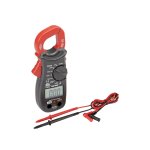Cwalster
Forum Newbie
- Joined
- Sep 14, 2020
- Threads
- 1
- Messages
- 4
Currently attempting to resurrect a free early 90s MTD lawn tractor (wizard brand) that doesn't want to start. Was parked several years ago by the previous owner, carburetor issues were assumed so that was removed to be fixed, the fix never happened, so the tractor was stored outside for at least a year with no carburetor. More issues are being discovered as i dig further into it.
Engine is a Briggs 422707-1512.
First, carb, fuel filter and fuel line were replaced with new. Fresh gas and oil were used. Air filter is removed for testing purposes.
Battery is completely dead, so this was jumped to my car battery with the car running. battery measured over 12v and the starter was drawing 110-140a. i'll have to check voltage under load at the starter, but there was enough juice available to the system to work.
Engine would not start, acting like low battery. Engine wasn't getting enough RPM, doing the whole cha-chung cha-chung sound, slowing rapidly during the compression cycles.
Checked plugs, they were pretty fouled so opened the heads and cleaned the carbon out. Not good, but not the worst I've seen. Attempt again, still not getting enough speed.
Removing either one of the plugs would get the engine up to starting speed.
Therefore I have to assume either the starter motor is weak or i have a valve train issue causing too much compression. The motor is old and doesn't have a automatic decompressor for starting that i can tell based on part diagrams. Its a flat head engine, so there isn't much adjustment in the valve system that i can tell. Neither of the previous owners would be the type of people to go messing that deep into the engine either.
Looking for testing methods to determine if either the starter is bad or its a valve issue. This project is racking up enough bad parts (needs new front tires, battery, air filter, plus whatever is causing the current issue, and haven't gone through the ignition system or the transmission, which is under suspicion) that i am determining if this an economically feasible project. no point in throwing 300 bucks on a tractor only worth 300.
Engine is a Briggs 422707-1512.
First, carb, fuel filter and fuel line were replaced with new. Fresh gas and oil were used. Air filter is removed for testing purposes.
Battery is completely dead, so this was jumped to my car battery with the car running. battery measured over 12v and the starter was drawing 110-140a. i'll have to check voltage under load at the starter, but there was enough juice available to the system to work.
Engine would not start, acting like low battery. Engine wasn't getting enough RPM, doing the whole cha-chung cha-chung sound, slowing rapidly during the compression cycles.
Checked plugs, they were pretty fouled so opened the heads and cleaned the carbon out. Not good, but not the worst I've seen. Attempt again, still not getting enough speed.
Removing either one of the plugs would get the engine up to starting speed.
Therefore I have to assume either the starter motor is weak or i have a valve train issue causing too much compression. The motor is old and doesn't have a automatic decompressor for starting that i can tell based on part diagrams. Its a flat head engine, so there isn't much adjustment in the valve system that i can tell. Neither of the previous owners would be the type of people to go messing that deep into the engine either.
Looking for testing methods to determine if either the starter is bad or its a valve issue. This project is racking up enough bad parts (needs new front tires, battery, air filter, plus whatever is causing the current issue, and haven't gone through the ignition system or the transmission, which is under suspicion) that i am determining if this an economically feasible project. no point in throwing 300 bucks on a tractor only worth 300.

